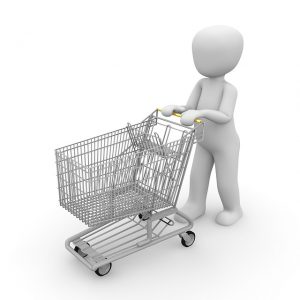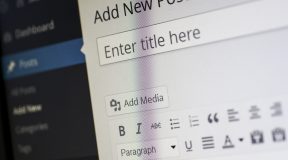Website owners sometimes forget a very important fact – not everyone who comes to your site is ready to do business with you (i.e., make a purchase or otherwise spend money). Customers look around on sites for lots of reasons, and if you are going to have any chance of converting them into a buying customer, you have to understand what stage they may be at:
Initial Interest and Curiosity Stage

At this stage a site visitor is on a journey, they have a need or lack, but they are still trying to figure out exactly what they need. They may have been to other sites – many in fact – but they are still looking around and have come to you. They are at the stage where they have much curiosity and initial interest in what you are offering.
To attract their interest, try to feature website content/pages with titles like “The [YEAR] Blue Widget Buying Guide,” “How to Choose The Best Blue Widget,” “Which Blue Widget is Best for You?” and so on.
The Comparison Shopping Phase

One who has gotten a feel for what’s out there begins to slip into the next phase – the comparison shopping phase. At this stage, they have a sense of what options for various products/services are available to them, but they are unsure which is the “best” product, or service, or combination of options for them specifically. And they want to make sure that they get exactly what they need, at the very best price. Your product/service might look solid to them, and they might be 100% sure it is the best for them, but if your competitor sells it less expensively, they will be gone from your site in a flash!
To help them out, your website content/pages should have helpful material like “Blue Widgets Vs. Green Widgets: A Comparison Review,” “Blue Widgets Options,” “A Pricing Guide to Blue Widgets,” etc. Videos, user manuals that can be viewed or downloaded, offering a free trial (when your competitors don’t) can be very effective in keeping the involvement of those who are comparison shopping.
The Refining Options Phase

At this stage, visitors will be looking at all the “details” and “fine print.” A purchase is imminent, but the sale is not yours yet! They may still be trying to refine their options before the wallet comes out.
For a customer at this phase, product description information becomes critical (if it hasn’t before this) – every word of it.
Also, as much as possible, try to get customer reviews to state the features/aspects that were important to them when they purchased, as well as a strong confirmation from the reviewer that they are satisfied with their purchase.
When your prospects at this phase read a review where another satisfied customer mentions the features/aspects that are also important to the prospective buyer, that will make them more confident that they will be satisfied as well.
Another thing that can help move the needle for folks at this stage is to have web content that presents any buying or pricing options that would make the purchase more affordable for them.
The Final Destination: Purchase Phase

At this stage, the customer has wrapped up their research and investigation. All the options and alternatives have been noted and examined and you are at the top of the list!
As far as your site content/pages are concerned, here are some important tips:
- To encourage an easy transition to the “purchase phase” from earlier stages in their customer journey, make sure that you are linking from all your informational pages to your product/sales pages. Don’t make the customer have to look in the nav links or do a site search to find pages where they will actually buy your stuff!
- Make sure that your purchase process — from start to stop — is easy (especially on a smartphone), safe (secure) and quick.
- If you capture an email as a part of the purchase process, and the customer does not actually complete the purchase (because they have abandoned their shopping cart and left the site), make sure to follow-up with an email reminding them that they have items in their shopping cart.
In summary, if your site is missing crucial content that your visitors are looking for – they will go somewhere else to look for it! That’s lost traffic and potential sales.
When a fly lands on flypaper, they are stuck there forever. “Flypaper” websites are those designed to keep a customer who “lands” there, no matter what they are looking for, on that same site, until the sale is closed and money has changed hands. For this to happen, you have to have content on your site that will influence site visitors at every stage in their journey. Is your website a flypaper site?





